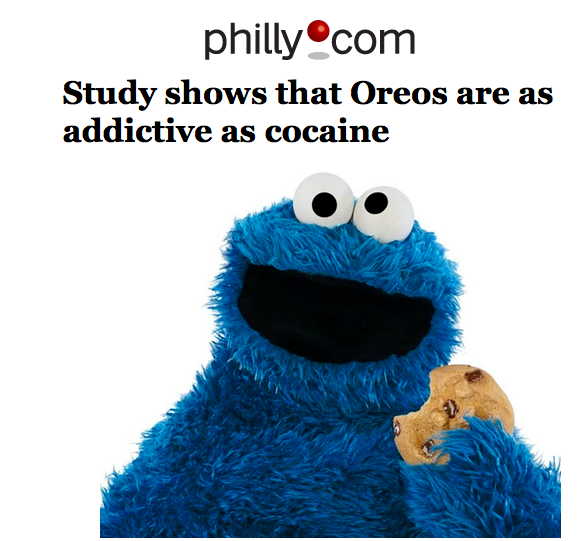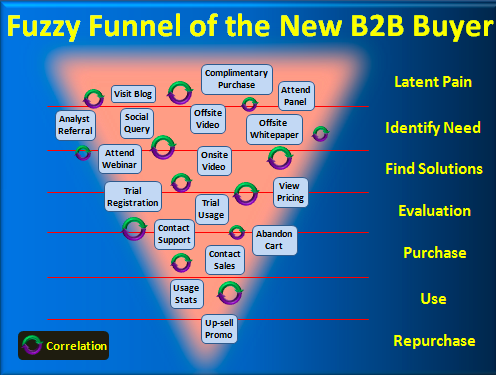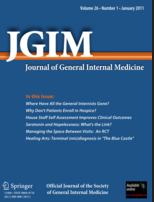Archives for October, 2013
Are Oreos Addictive as Cocaine?
by Joshua Schneck

 | October 16, 2013
| October 16, 2013
Are oreos addictive as cocaine?
Yes, according to headlines from scores of news sources, including NBC, CBS, Time and The Wall Street Journal. No, if you read the otherwise decent reporting and learn that the study was on laboratory rats. The website at Connecticut College has it right in the headline, which clearly states the study was in rats.
Thanks again to Gary Schwitzer at HealthNewsReview.org for shedding light on the media practice of misleading headlines regarding scientific research. As a Minneapolis PR firm specializing in healthcare PR and food & beverage PR, we understand the need to tread carefully when promoting scientific research for our clients.
Even good reporters may have nothing to do with the headline written for their story, and the resulting issues can be thorny.
Could this have been avoided? Maybe not, as the addictive qualities of Oreos is a credible concept to anyone who has eaten them – they’ve got 34 million Likes on Facebook. And, the desire of headline writers to attract readers.
Good communications with the media always help, but for something like this it’s good to think through how the media will handle a story and plan accordingly.
As for me, I like Oreos but still miss Hydrox.
Three Keys to B2B Content Marketing for Complex Sales
by Joshua Schneck

 | October 10, 2013
| October 10, 2013
There are three keys to B2B content marketing for complex sales – corporate law firm marketing, healthcare information technology products and services, medical device, B2B food manufacturing and other B2B products and services. These are sales with longer sales lead times and higher price tags, and rely on direct meetings and contacts to build relationships and close the deal. As a Minneapolis B2B content marketing agency, we’ve always matched PR, marketing and other services to the actual sales process of our clients. With content marketing, the opportunities for engaging prospects and clients have become better – including social media and analytic methods. We’ve found that three keys to B2B content marketing for complex sales are:
1. Have a documented content marketing strategy.
2. Match content marketing to the sales process.
3. Measure and improve the strategy as needed.
Documented content marketing strategies are more successful
According to research sponsored by Brightcove, the marketers who reported having a documented content marketing plan were more likely to say they were effective – 66%, than those who did not have a documented content marketing plan – 11%. I’d make some allowance for selection bias here, as those who invest the time and resources in developing a documented strategy might be inclined to score their efforts higher, but the point is that serious marketing efforts generally stem from a fair amount of analysis and planning. Unfortunately, content marketing is too often the flavor of the month and done on a piecemeal basis, without a formal strategy or plan.
What’s in an effective, documented content marketing strategy? At a minimum, it should set out clear goals, identify team members (including outside resources) and responsibilities, contain a SWOT analysis, and lay out basic tactics and timetable. Ideally, it should also include a description and analysis of your sales and marketing process and spell out how content marketing will support – and in some cases, lead – that process. In addition, it should identify prime topics to focus on – topics that of are interest to your prospects and customers in ways that help build a case for ultimately buying your product or service. For example, a company trying to sell software to drive efficiencies in the hospital emergency department might publish white papers, case studies, blog entries, etc. on revenue, margin, cost and quality issues for hospitals. A law firm selling intellectual property services might focus on content that explores the implication of new laws, rulings, treaties and technologies that present challenges and opportunities to their clients and prospects.
Match B2B content marketing to the sales process
As Joel York illustrates with this graphic in his excellent blog, the B2B buyer enters a “fuzzy funnel” that is built on content marketing and social media. Much of the old “solution selling” has already occurred before a sales rep has spoken with the customer. As Brent Adamson, Mathew Dixon and Nicholas Toman point out in their Harvard Business Review article:
“A recent Corporate Executive Board study of more than 1,400 B2B customers found that those customers completed, on average, nearly 60% of a typical purchasing decision—researching solutions, ranking options, setting requirements, benchmarking pricing, and so on—before even having a conversation with a supplier. In this world the celebrated ‘solution sales rep’ can be more of an annoyance than an asset. Customers in an array of industries, from IT to insurance to business process outsourcing, are often way ahead of the salespeople who are ‘helping’ them.”
The good news here is that the right mix of content marketing, matched to the actual sales process, will support your sales effort and boost inbound marketing. Careful attention to relevant government or industry standard setting developments, major trade shows, LinkedIn discussion groups, pain points and other factors will provide guidance on the mix and timing of content marketing initiatives (set out in the the documented strategy, of course). We had a patent law firm client where we focused on a key change in an obscure part of IP law. Two weeks after publishing a document on the subject, a prospect contacted the author and signed up for more than $1,000,000 in legal services.
Measure and improve the strategy as needed
In the old days of marketing, you did your best analysis, conducted effectiveness research of varying value, and prayed a lot. Today, the analytics permit fine and real time measurement of everything you’re doing in content marketing. Are you not currently measuring? You’re not alone. Only 15% of attendees as a recent content marketing conference reported good measurement. Yet, the tools are there already, via Google, your website, Twitter, etc. By tracking page views, downloads, shares, guest postings, lead generation and impact on sales, you can measure impact and ROI and make adjustments in real time. The important thing is to measure things that are critical to your actual sales process, and that offer insights of value. There’s no cookie cutter approach here. Customize it.
In addition, listen to what prospects and customers are saying in their posts, Tweets, blogs and to your sales people. If Regulation “Q” is on everyone’s mind, it makes sense to address content to that concern. With good measurement tools, and a close ear to what prospects and customer are saying, your content marketing will be relevant, timely, and most importantly, effective.
Questions? Comments?
We’d love to hear you questions or comments. Please contact me directly. As a Minneapolis B2B content marketing agency, we’re eager to keep learning and carrying on a dialogue with like-minded professionals.
Sex, Lies and Healthcare Marketing
by Joshua Schneck

 | October 1, 2013
| October 1, 2013
Sex, lies and healthcare marketing go together all too often, but the good news is that few of the drug advertising claims on TV are actually false, according to a study published in the September 2013 issue of Journal of General Internal Medicine. Yet, as other studies suggest, drug ads may be encouraging gender bias as in the case of psychoactive drug advertising (see discussion below).
Thanks to Gary Schwitzer in HealthNewsReview.org, for writing about “Content Analysis of False and Misleading Claims in Television Advertising for Prescription and Nonprescription Drugs,” by authors Adrienne E. Faerber PhD and David Kreling PhD.
In the study, the authors analyzed TV drug ads over a two-year period and found that over half of drug claims were potentially misleading. False claims accounted for only two percent of the prescription drug ads and seven percent of the nonprescription ads.
As Gary points out from the study’s findings, the average consumer may see up to 30 hours of drug advertising while spending 15-20 minutes per visit with their caregiver.
Adding to the potential problem is the gender bias reflected in some drug advertising. For example, psychoactive drug advertising portrayed women 62 percent of the time, according to a study published in a Brazilian journal. Judy Stone writes on the issue of women and drug advertising in the Scientific American blog.
As a Minneapolis healthcare content marketing firm, we care deeply about helping our clients engage their customers in credible, sustainable ways. Sex, lies and healthcare marketing may go together sometimes, but we’re also encouraged that most healthcare marketing avoids false claims. The misleading claims issue is something for the industry to work on.


